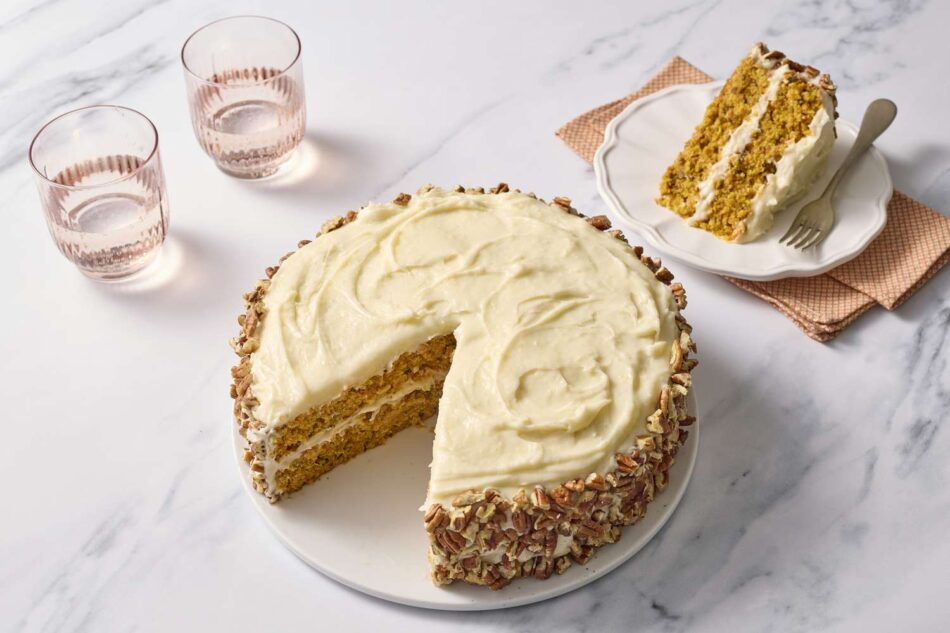Whether you’re celebrating a birthday, a wedding, or enjoying a casual dessert with friends and family, cake is always on the menu. But how long does cake last, and how should you store it to keep it fresh? Should it be kept at room temperature or in the refrigerator? It’s not a one-size-fits-all answer; the best way to store cake depends on, well, the cake itself. There are so many different types of cake–vanilla layer cake with chocolate frosting is only the beginning. Cakes can be simple and plain, but often they are filled with fruit or whipped cream, pastry cream, or lemon curd, which can complicate matters.
We spoke with a professional pastry chef and a recipe developer to learn about the different types of cake and the best ways to store them, no matter what type of cake and whether they are simply dusted with powdered sugar or stacked with an elaborate filling.
- Bronwen Wyatt, New Orleans-based pastry chef and food writer
- Jason Schreiber, food stylist, recipe developer, and author of Fruit Cake: Recipes for the Curious Baker
How to Store Cake Depends on the Type
Bronwen Wyatt, a New Orleans-based pastry chef and food writer, says that ultimately, most cakes have the best texture when stored and eaten at room temperature. “Most oil or butter-based tea cakes can be wrapped well in plastic wrap or beeswax-coated cloth and stored at room temperature for up to five days,” she says. This includes popular cakes like banana bread, pumpkin bread, pound cake, or olive oil cakes. She notes that butter-based cakes can taste dry when cold and should always be brought to room temperature for maximum enjoyment.
Cakes to Store at Room Temperature
Bryan Gardner
It’s generally agreed that the majority of cakes do best when stored, tightly wrapped, at room temperature. If they are filled or frosted, they may require refrigerating, as outlined below. If topped with a simple glaze or a dusting of powdered sugar, they should not go into the fridge. Here are some of the most commonly found types of cake that can and should be stored on the countertop:
- Layer cakes (oil or butter-based): This can include most layered cakes that you expect to see in a bakery case, including carrot cake, red velvet, German chocolate, hummingbird, and even basic vanilla and chocolate cakes, says food stylist, recipe developer, and cookbook author Jason Schreiber. He notes that most are made using the creaming or reverse creaming method. These cakes are categorically moist, and when they don’t include a frosting or filling that requires refrigeration, are best stored and enjoyed at room temperature. They will last, tightly wrapped, for up to five days.
- Chiffon cake: Somewhere between a sponge and butter cake, you’ll find chiffon cake. It has a moist, light, and airy texture, and is usually made with oil. Schreiber puts this type of cake into a category called “foam cakes,” which are a broad group that includes whipped eggs to create structure and provide either all or at least a large portion of the leavening in the batter. These cakes tend to be less fatty, so they will last at room temperature for two to three days.
- Sponge cake: It’s very similar to chiffon cake, but for sponge cake, the eggs are often whipped, making it even more delicate and airy. Like chiffons, these cakes should also be enjoyed within two or three days.
- Pound cake: These are dense cakes and they are all about pure butter flavor. Pound cake will remain moist for several days at room temperature, sometimes up to one week—it will dry out quickly if refrigerated.
- Angel food cake: Much like chiffon and sponge cake, angel food cake has a cloud-like texture, which can lose some of its billowy lightness when refrigerated. What gives it that texture is partially a lower fat content, so enjoy it within two days.
- Flourless cake: Refrigerating a flourless cake is a surefire way to turn it even more dense. Flourless cakes will last at room temperature for two to three days.
Cakes to Refrigerate
Brie Goldman
Regardless of any fillings or frostings, there are some key types of cake that will always require refrigeration.
- Cheesecake: For the best texture, it’s necessary to refrigerate cheesecakes once they are baked and cooled. This not only helps set the filling, but it also keeps the dessert fresh—and no one wants warm or even room-temperature cheesecake. Cheesecakes should be tightly wrapped in plastic (to prevent any water from forming on the surface) and enjoyed within five to six days.
- No-bake cakes: These cakes are mostly made with ingredients such as whipped cream, cream cheese, and condensed milk, so they need to stay refrigerated—otherwise they could melt. If stored in the refrigerator, eat up these cakes in about five days; if made ahead and frozen (or freezing leftovers), they can last, tightly wrapped, for several months.
Making Cake Ahead
Sometimes the pros do it differently, Wyatt notes her fellow pastry chef Natasha Pickowicz is a firm believer that even cakes not included in the list above should be “aged” before serving—in other words, refrigerated for one to two days before the final frost and presentation to allow all of the flavors to mingle and meld. “I think this definitely holds true for chiffon and oil-based cakes with cooked fillings that have been brushed with syrups,” says Wyatt. However, in her opinion, all butter-based cakes or cakes with fresh fruit fillings will always be best the day they are made.
The Best Type of Cakes to Make in Advance
While there are some types of cake you can bake ahead and freeze, if you need to refrigerate a cake, as a general rule an oil-based cake is a much better choice than a butter-based one. If you think about how both neutral oil and butter behave when refrigerated, you’ll see that butter will harden, while oil will remain liquid for the most part. Because of this, butter-based cakes will begin to dry out much more quickly than oil-based ones when refrigerated.
When There Are Fillings and Frostings
When deciding whether or not you need to refrigerate a cake, think about frosting and filling before you consider the type of cake.
Fresh fruit: According to Wyatt, cakes that have a fruit element, such as a loaf cake with whole blueberries baked into it, a chunky apple cake, or a pineapple upside-down cake, are more prone to spoilage. She recommends keeping them at room temperature for up to 24 hours and refrigerating after that for longer storage (about three or four days, depending on the moisture level in your chosen fruit).
Glazes: Glazes with a high proportion of confectioners’ sugar are very resistant to spoilage. Wyatt notes that most glazes of this type should be fine at room temperature for several days, whether they be a poured glaze or an American-style buttercream. She notes that Italian and Swiss buttercreams are also quite stable, and can last at room temperature for 24 to 48 hours (factors like humidity can affect these numbers).
Dairy or egg-based: Any cake with a whipped cream, curd, or mousse element should always be refrigerated for both safety and the best texture. While the quality of the cake will start to change over time (fillings can turn the cake layers soggy), it’s still safe to enjoy up to three days later. The exception here is whipped cream—while it won’t ruin the texture of the cake, whipped cream will start to lose its fluffiness after about one day.
While we just told you that cakes with dairy or egg-based fillings or frostings should always be refrigerated, no one wants to eat cold buttercream. So, what should you do if you have a cake with a delicate, egg-based filling like pastry cream, mousse, or curd, that has been frosted with Swiss meringue buttercream? Wyatt’s answer is to allow the cake to temper for two hours at room temperature before serving. If the cake will be frosted for longer than that before serving (or if there might be leftovers), be sure to refrigerate it.
Cream cheese buttercream: This is an outlier, according to Wyatt: “The FDA says it should only be stored at room temperature for two hours, but this is frankly at odds with how most pastry professionals treat cream cheese.” She notes that pros leave the frosting at room temperature for much longer, sometimes as long as overnight. And she adds that she would feel comfortable eating cream cheese frosting that has been out for 24 hours.
If it has been sliced: A cake that has already been cut should have plastic wrap or wax paper pressed against the open crumb to preserve the freshness of the remaining cake.








